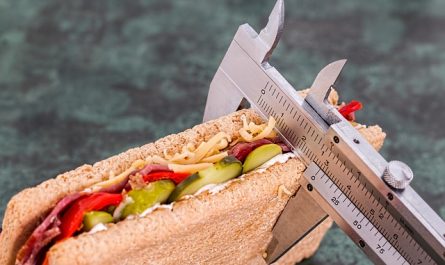Are you trying to get fit or lose weight? Then there’s a good chance you’ve done a little research on diets, and you may be overwhelmed by the sheer variety of diets out there!
From the keto diet to paleo and countless variations in between, how many diets are there?

1. Different Types of Diets: A Comprehensive Guide
When it comes to dieting, there is a dizzying array of options out there. It’s hard to know where to begin, from low-carb keto to high-protein to vegetarian – not to mention intermittent fasting, intermittent keto, and special diets for medical issues. Whether you’re looking to shed a few pounds, incorporate healthy habits into your daily routine, or to manage a specific medical condition, here is a comprehensive guide to different types of diets:
Low-Carb Keto
Low-carb keto diets are one of the most popular diets today. The idea is to reduce your carb consumption and replace it with fat, in order to reach and maintain a state of ketosis. This type of diet has been found to be effective in terms of weight loss, regulation of blood sugar, and reducing risk factors for certain types of disease.
High-Protein
High-protein diets involve increasing your intake of protein-rich foods, such as animal products, fish, legumes, nuts, and seeds. Eating plenty of protein can help to boost your energy levels, improve satiety, and build and repair muscle. It can also be an effective way of reducing weight, as studies have found that people who ate higher-protein diets tended to have lower body fat than those on lower-protein diets.
Vegetarian
Vegetarian and vegan diets are some of the healthiest types of diets an individual can follow. Vegetarians abstain from consuming any animal products, like meat, fish, and dairy, while vegans don’t consume or use any animal products, including eggs, honey, and leather. Plant-based diets are full of plant proteins, vitamins, minerals, and phytochemicals – all great for promoting overall health.
Intermittent Fasting and Intermittent Keto
Intermittent fasting and intermittent keto are both methods of cycling the intake of certain nutrients. Intermittent fasting involves cycling between periods of eating and fasting, while intermittent keto combines the basics of the keto diet with the principles of intermittent fasting. This can help to maximize fat burning potential, optimize insulin sensitivity, and reduce hunger.
2. Fad Diets: The Pros and Cons
Fad diets often generate a lot of buzzes – they’re often extreme, restrictive, and promise fast results. But are they actually healthy? It’s important to be aware of both the pros and cons.
Pros:
- Fad diets can often lead to quick weight loss.
- They have the potential to become lifelong lifestyle changes.
- These diets can be an easy way to jumpstart your health journey.
At first glance, these advantages may make fad diets seem appealing, but it’s important to understand their drawbacks as well.
Cons:
- Fad diets are often very restrictive, making it difficult to adhere to them in the long term.
- They don’t typically provide enough essential nutrients for a healthy lifestyle.
- Some fad diets are downright dangerous; you should always do your research before beginning.
In the end, it’s up to the individual to determine if fad diets are right for them. There is no one-size-fits-all approach to staying healthy.
3. Making Sense of Different Diet Approaches
Trying to make sense of the vast variety of diet approaches can be overwhelming. It’s important to evaluate them individually and understand what each offers its followers before committing to one. Here’s a closer look at a few popular options:
- The Vegan Diet: As the name implies, this diet removes all animal products, including meat, dairy, eggs, and honey, from the diet plan. This approach is popular among those concerned with animal cruelty and environmental sustainability.
- The Paleo Diet: Unlike veganism, which eliminates animal products of any kind, paleo allows a range of animal products, such as fish, meat, eggs, and certain dairy products, as long as they are organic and pasture-raised. Followers of the diet also avoid processed foods, dairy, grains, legumes, and refined sugars.
- The Mediterranean Diet: This approach emphasizes the use of fresh and wholesome foods like fruits, veggies, fish, legumes, nuts, and seeds. It also allows for moderate amounts of red wine and olive oil. Its popularity is largely due to its overall health benefits, such as its ability to reduce inflammation and improve heart health.
Understandably, the best diet for you will depend on your needs and dietary preferences. Consider your lifestyle, current state of health, and target wellness goals to help you decide which approach best fits your needs. While none of these approaches can guarantee a one-size-fits-all solution, it’s a good starting point for understanding popular diet approaches and their potential benefits.
4. What to Look for in a Diet Plan
The components of a healthy diet plan: When it comes to selecting a truly healthy diet plan, there are certain components you should watch out for. Take note of the items listed below to ensure that your chosen diet plan meets your health goals.
- A focus on nutrient-dense, whole foods over processed, refined products
- A variety of fruit and vegetables to ensure adequate fiber and vitamins
- Plenty of healthy fats, lean proteins, and complex carbs from sources like whole grains, nuts, and legumes
- Healthy snacks that provide satisfying flavor—think nuts and seeds, smoothies, and fresh fruit
- Portion sizes that are appropriate for you, according to your height, weight, and activity levels
Most importantly, the diet plan you choose should be enjoyable and sustainable. It should be something that provides you with the energy you need to maintain a healthy, active lifestyle and help you revel in the deliciousness of real food. Consider speaking to a registered nutritionist or dietitian for professional assistance in designing a diet plan to meet your individual needs.
5. Eating for Your Health: The Ultimate Diet
Making Healthy Choices
If you’re looking to make changes to your diet and improve your health, the first step is understanding the basics of what makes a good diet. Here are a few tips for making healthy choices:
- Eat plenty of fruits and vegetables
- Choose whole grains and legumes
- Reduce consumption of processed and fried foods
- Enjoy lean proteins like fish, eggs, and legumes
- Include nuts and seeds for necessary fats
Starting off with these simple rules can put you in a good position to develop your own personal diet plan. It may even put you on the path to more energy, better sleep, and even weight loss.
Customize Your Diet
Once you get the basics down, there are plenty of ways to customize your diet to meet your goals. Consider your lifestyle and needs when crafting the best plan for your long-term nutrition and health.
- If you’re vegan, there are plenty of plant-based options to choose from
- If you’re interested in weight loss, you may want to stick to low-calorie foods
- If you follow a sports program, you’ll want to be sure you have the energy fueled by protein and carbohydrates
You can tailor your diet to match your lifestyle while making sure you’re eating the right things to stay healthy and energized. Through mindful eating, you can create a works-for-you plan so you can look and feel your best.
Asked Questions
Q: What Is a Diet?
A: A diet is an eating plan that is designed to help you reach your health and fitness goals. It often involves changes to your food consumption, such as portion size, calorie count, types of foods eaten, as well as changes to your lifestyle and exercise habits.
Q: ?
A: There are literally hundreds of different diets out there, from popular diets like the ketogenic diet and paleo, to lesser-known approaches like fruitarianism and macrobiotics. In fact, it can be hard to keep up with the different diets and what approaches each one takes.
Q: Is There an Easy Way to Tell the Difference Between Diets?
A: Yes, many diets are broken down into categories based on their approach. For example, some diets focus on cutting out certain food groups, such as low-carb diets which cut out carbs, while others focus on reducing calorie intake, such as the Mediterranean diet. Understanding the basic principles of each type of diet can help you choose the one that best fits your goals.
Q: Are Some Diets Better Than Others?
A: Each dietary approach has pros and cons, so there is no one-size-fits-all solution. Ultimately, the best diet for an individual will depend on their personal goals and preferences. For example, someone looking to lose weight may prefer a low-carb diet, while an athlete may benefit more from a high-protein diet.
It looks like diets are not going anywhere anytime soon! There are countless diets out there – no matter your goal, there is sure to be a diet out there for you. So, why not take the opportunity to pick one that suits you and start eating healthier today?



